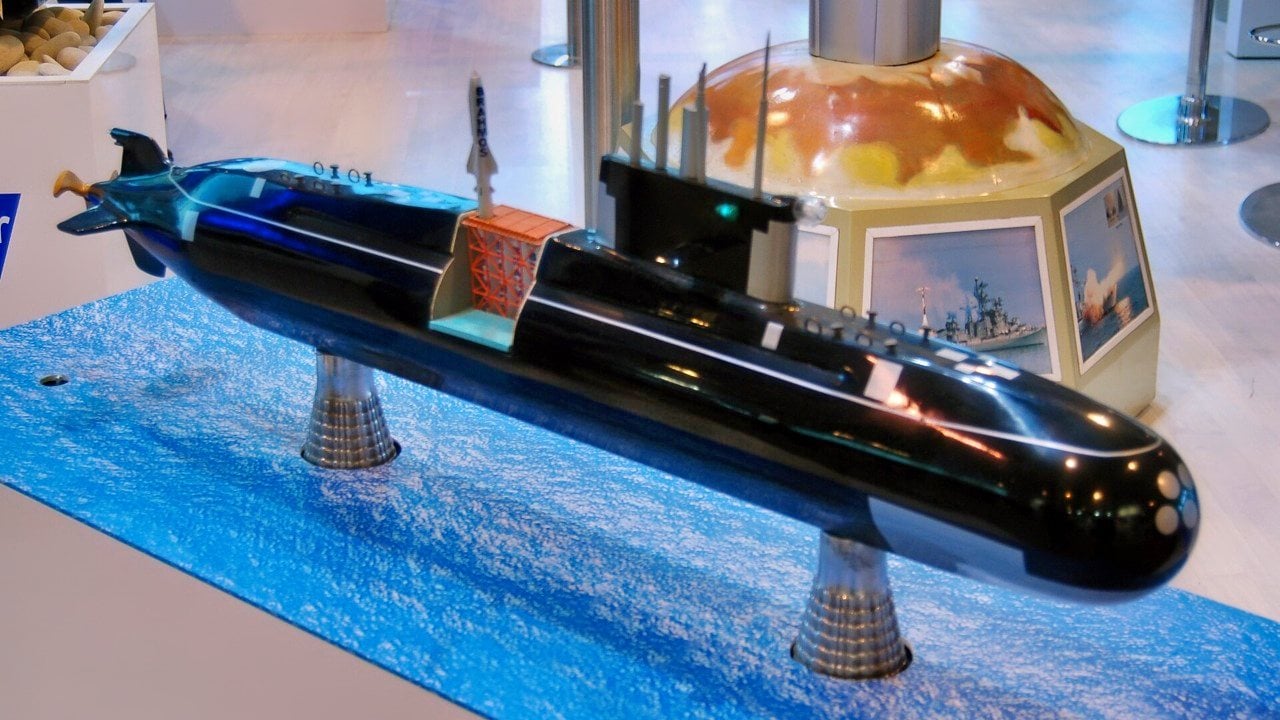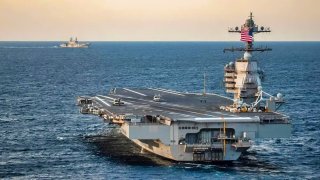Aircraft Carriers vs. Submarines: The Future of Naval Power
The history of naval warfare has seen a continuous battle for supremacy between aircraft carriers and submarines, two of the most formidable types of warships.
Summary and Key Points: The history of naval warfare has seen a continuous battle for supremacy between aircraft carriers and submarines, two of the most formidable types of warships.

-This balance has shifted over the decades, influenced by technological advancements and changing strategic priorities.
The Ongoing Battle: Aircraft Carriers vs. Submarines in Naval Warfare
The great naval powers emerged from World War I relatively confident that the battleship would continue to decide question of naval warfare. German submarines had nearly starved Great Britain in the last two years of the war, but the Royal Navy had turned back the offensive with minimal damage to its heavy units. The Royal Navy had also begun to experiment with aircraft carriers, a development the American and Japanese watched with close attention. Still, the major interwar naval agreements concentrated on battleships, rather than on “support” vessels such as the carrier and the submarine.
In World War II, the aircraft carrier and submarine would finally have their day; American subs and carriers swept the seas of Japanese warships and merchant vessels, while in the Atlantic German submarines struggled against British and American escorts to win the Second Battle of the Atlantic. In the Cold War era, the Soviets and Americans prepared both their submarines and carriers, each with revolutionary new designs, for renewed struggle.
This article traces the course of the balance of power between aircraft carriers and submarines. This balance has swayed back and forth across the decades, and remains unsettled. Submarines and aircraft carriers have become the capital ships of the modern naval era, and continue to constitute the decisive element of naval power.
Submarines Have Their Day
HMS Courageous was the first modern aircraft carrier to fall victim to a submarine. On September 17, 1939, while hunting German U-boats, Courageous was torpedoed and sunk by one of her prey. In the wake of her loss, the Royal Navy immediately pulled its fleet carriers out of anti-submarine duty, regarding them as to valuable to risk in such operations. Nevertheless, U-boats would continue to wreak a terrible toll on the carriers of the Royal Navy. HMS Ark Royal sank in November 1941 after being torpedoed by U-81. HMS Eagle was lost in a Malta convoy to torpedoes launched by U-73.

Not long after the beginning of the Pacific War, submarines began to exact a similar price on the U.S. carrier force. USS Saratoga survived two torpedo attacks, but was knocked out of action for large parts of 1942. USS Wasp was lost in a stunning attack that also sank a USN destroyer, and badly damaged the battleship USS North Carolina. USS Yorktown, on the verge of being saved by damage control parties after suffering several air attacks, was sunk at the Battle of Midway by I-168.
American submarines would have their revenge. After resolving command and technical issues that plagued the service in the early years of the war, U.S. submarines ranged deep into Japanese shipping lanes, attacking military and civilian ships alike. They had a devastating impact on the Japanese carrier fleet, sinking HIJMS Taiho and HIJMS Shokaku at the Battle of Philippine Sea, the gigantic HIJMS Shinano during transit, and several other smaller carriers in the final year of the war.
The Aircraft Carriers Strike Back
But the fight was not one-sided. Even during World War I the British understood that aircraft could play a major role in fighting submarines. The aircraft of the time, however, lacked the range, speed, communications equipment, and payload to effectively combat the U-boat menace. These basic conditions had changed by the beginning of World War II, and after a period of adaptation aircraft became central to the Battle of the Atlantic. This included land-based aircraft (converted heavy bombers such as the B-24 Liberator, as well as certain purpose-built aircraft) and eventually carrier-based planes. This was why the British made the ill-fated decision to use HMS Courageous in an anti-submarine role. Indeed, the first Japanese warship sunk during the war was I-70, a sub that fell victim to aircraft from USS Enterprise.

The Allies developed a new class of “escort carriers, small aircraft carriers with relatively low speeds that could accompany and defend convoys. Aircraft from these carriers helped locate submarines hunting on the fringes of a convoy, then either led the attack or led destroyers to their prey. Three such carriers were lost in the war, two British (to German submarines) and one American (to a Japanese sub).
There is no exact tally of the number of U-boats sunk by carrier-borne aircraft, although thirty-one were sunk by Fleet Air Arm (Royal Navy) planes and another eighty-three by the U.S. Navy. Aircraft also contributed to the loss of other submarines by directing surface ships to the attack, and contributed to convoy defense through deterrence.
In this sense, aircraft carriers turned the tables on submarines. The latter undoubtedly posed a major threat to the former (although less of a threat as the war went on and counter-force anti-submarine practices grew more effective), but the former provided the foundation for winning the great commerce wars. Indeed, Japan’s inability to provide sufficient pilots and escort carriers made it extremely difficult to defense Japanese commerce in the Pacific, allowing the USN to effectively destroy the entire Japanese merchant marine.
Technological Revolutions
Submarines and aircraft carriers each underwent a series of revolutions in the wake of World War II. Regarding the latter, the development of “true” submarines by Germany in the last year of the war changed the fundamentals of anti-submarine warfare by eliminating the necessity for subs to operate on the surface. “True” submarines also had much more lethal performance characteristics than their older cousins. Not long after, the United States would usher in the nuclear age of submarine warfare through the construction of USS Nautilus, a submarine powered by nuclear reactor that could remain underwater indefinitely. Finally, the advent of submarine-launched missiles of both the cruise and ballistic variety gave submarines a new strategic mission, as well as lethal new tools for attacking aircraft carriers and other surface vessels.
On the carrier side, the development of jet aircraft rendered most existing ships obsolete, and ushered in a new era of gigantic “supercarriers,” two or three times the size of most World War II fleet carriers. The largest of these eventually had nuclear-power plants of their own. The helicopter came into its own, eventually carrying sensitive sonar equipment and lethal anti-submarine torpedoes. Dedicated anti-submarine aircraft, both carrier- and land-based, had similar capabilities.
And so the competition between aircraft carrier and submarine continued. The United States worried deeply about the security of its aircraft carriers, especially after the emergence of large Soviet cruise-missile submarines (SSGNs) that could strike at considerable distance. The Soviets also built the sophisticated Alfa class sub, which could dive deeper and move faster than any NATO sub, and could potentially emerge from the depths to attack a USN carrier in transit. Nuclear-tipped torpedoes meant that any successful attack would stand a good chance of completely destroying the target carrier.

Both the Soviets and the Americans developed dedicated anti-submarine aircraft carriers. The USN converted several old Essex class carriers into an anti-submarine configuration (designated CVS), equipping these ships primarily with helicopters and anti-submarine fixed-wing aircraft rather than with fighters and attack planes. The first Soviet aircraft carrying ships, Moskva and Leningrad, were committed anti-submarine platforms, equipped with helicopters and intrinsic anti-submarine weapons. The next generation of Soviet aircraft carrier, the Kiev class, carried a complement of short-ranged STOVL fighters designed to deter or defeat incursions of anti-submarine aircraft into the “bastions” patrolled by the USSR’s ballistic missile submarines.
Postwar Experience
Direct conflict between carriers and submarines became rare, mostly because conflict between countries that each had submarines and aircraft carriers had become rare. But in those rare occasions the conflict between subs and carriers still structured operational planning.
In the Falklands War, the British worried a great deal about the threat posed by ARA San Luis, a Type 209 submarine. San Luis undertook several unsuccessful attack against British ships, and in turn the British expended considerable resources trying, unsuccessfully, to find and sink her. For their part, the British hunted ARA Vienticinco de Mayo with HMS Conqueror, before finding and sinking ARA General Belgrano.
In the 1971 India-Pakistan War, the carrier INS Vikrant helped the Indian Navy conduct a blockade of East Pakistan. The Indians were extremely careful with Vikrant, however, because of the presence of the Pakistani submarine Ghazi. Ghazi was lost under mysterious circumstances in early December, however, freeing Vikrant to undertake more audacious operations.
Today
The balance of threat between carriers and submarines remains unsettled today. The most advanced vessels of both sort have become absurdly expensive, with USS Gerald R. Ford tipping the scales at some $12 billion (not including aircraft), and the Virginia-class SSN coming in at $2.7 billion (although smaller diesel-electric subs are much cheaper). Submarines have even taken on some of the missions of aircraft carriers, including long range strike against land targets.
In combat, aircraft carriers are faster than submarines, and have a group of escorts (often including a submarine) intended for self defense. Carriers can also launch aircraft capable of detecting and attacking submarines at range, although the availability of these aircraft has waned since the end of the Cold War. For their part, submarines can strike carriers at ever greater distance with cruise missiles, and can increasingly utilize targeting data provided by offboard sensors to find their prey.
Last Salvo
Submarines will remain relevant weapons of war as long as the sea offers a barrier to detection and to the use of weapons. Aircraft carriers will remain relevant as long as its useful to have mobile airfields. As both of these conditions seem likely to hold for the foreseeable future, carrier captains and sub skippers will still need to worry a great deal about one another.
About the Author: Dr. Robert Farley
Robert Farley, a frequent contributor to TNI, teaches at the University of Kentucky.


